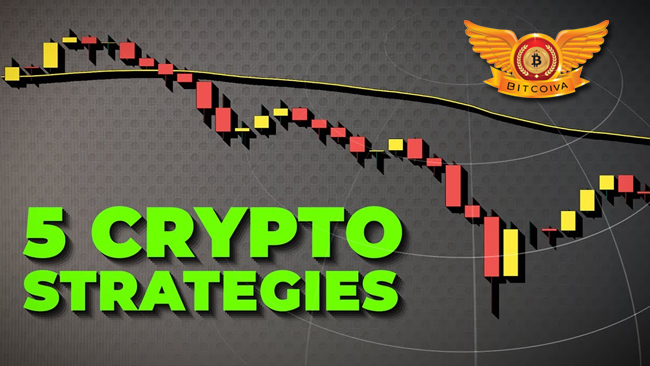The term “day trader” derives from the stock market, where trades typically take place only during regular business hours on weekdays. When day-trading cryptocurrency, one notable difference is that crypto markets are open 24 hours a day, seven days a week.
For would-be day traders, knowing some day-trading basics as well as a few things to know before investing in crypto in this manner, is beneficial.
Crypto Day Trading: What You Should Know?
To be lucrative, day trading requires the presence of two market conditions
Liquidity: Traders must be able to enter and exit trades promptly and without causing significant price movement. Slippage—when a large position cannot be liquidated at the price a trader desires—can eat into a trader’s earnings in a market with limited liquidity. With slippage, the position must be sold in stages, with each order having a lower price than the one before it, resulting in fewer overall gains by the time the entire position is sold.
Volatility: A lack of volatility indicates that prices are not moving and that there is no opportunity to buy low and sell high in the cryptocurrency market. Because day traders try to buy and sell on the same day, markets must be volatile in the short term for this strategy to work.
5 Crypto Trading Strategies for a Single Day
Over a long period of time, simply holding bitcoin or top cryptocurrency in India has proven to be a profitable strategy. Gains have outpaced those of other asset classes.
So, when deciding how to invest in Bitcoin, one strategy could be to simply buy and hold. This is especially true during crypto bull markets, when corrections are typically brief. However, investors should keep in mind that Bitcoin and other cryptocurrency India are highly speculative investments. Just because an investment has risen in the past does not guarantee that it will continue to rise in the future.
There are several tactics to attempt for investors who are interested in day trading. Technical analysis is one of the most popular tactics, with entire trading communities forming around this school of thought.
One thing is certain: short-term traders must use some sort of rule-based trading approach. Here are five-day trading cryptocurrency strategies.

1. Technical Analysis
Technical analysis (TA) is the use of mathematical indicators and chart patterns to predict which direction prices will move next. Some technical indicators, such as the RSI, can be generated automatically by a computer program, whereas others must be identified by humans looking at charts (the cup-and-handle pattern, for example).
The relative strength index is a common technical indicator (RSI). A single line with a value between 0 and 100 appears beneath a chart. The closer the RSI comes to 100, the more overbought the market deemed to be, suggesting that prices may collapse. The closer the RSI comes to 0, the more oversold the market is perceived to be, implying that prices may climb. This is an example of how TA could be used by someone day-trading cryptocurrencies.
2. Sentiment and News Analysis
While looking at headlines and overall market sentiment is less popular among short-term traders. It uses in Bitcoin day trading. Big news items can move crypto markets quickly at times.
For example, on the day this article was written in mid-April 2021, Turkey announced that it would prohibit Bitcoin and other cryptocurrencies from being used as payment methods within its borders. This triggered a global crypto market selloff, with Bitcoin initially falling about 3.2 percent and later falling more than ten percent.
There are also websites that analyse Twitter chatter to track the sentiment of the most popular cryptocurrencies. According to the theory, more positive tweets about a cryptocurrency equals more bullish sentiment, while more negative tweets equals more bearish sentiment.
3. Trading in the Range
Range trading is based on the assumption that prices tend to move within a certain range. This strategy requires the use of candlestick charts as well as support and resistance levels.
When prices reach a support level, traders may buy, and when prices reach a resistance level, they may sell. Alternatively, they may go short when prices reach resistance and then close the short when prices fall to support.
Range-bound trading illustrates by pivot points. Calculating pivot points gives investors an idea of what price levels are likely to see momentum reversals.
4. Scalping
The goal of this technique is to profit from relatively modest price movements over short periods of time. These are frequently market inefficiencies such as bid-ask spread gaps or liquidity gaps.
Scalpers often employ leverage such as margin or futures contracts to magnify their returns because they are looking to profit on small price movements. However, because this method amplifies possible losses, risk management is very crucial.
To select entry and exit positions for their trades, scalpers may use tactics such as volume heatmaps. Also order book analysis, or a variety of technical indicators. Scalping , best suited for experienced traders due to its fast-paced and high-risk nature.
5. Trading Bots
Bot trading, also known as high-frequency trading (HFT), is the use of algorithms and trading bots . It programs to execute a large number of trades in a short period of time. This method necessitates knowledge of advanced trading strategies as well as programming.
While crypto currency trading India bots handle the actual trading. High-frequency traders do not simply sit back and let a computer program handle everything. Trading bots entail devising a specific strategy, creating the appropriate program to carry out that strategy. And then constantly monitoring, backtesting, and updating the algorithms to keep up with changing market conditions.
In summary, Day trading is a strategy that involves buying and selling stocks throughout the day. The day trading done in order to make a profit. Because crypto markets are open 24 hours a day, the trading “day” is even longer. Day trading, on the other hand, can be a particularly risky endeavour with no guarantee of profit.
Visit us on: www.bitcoiva.com

